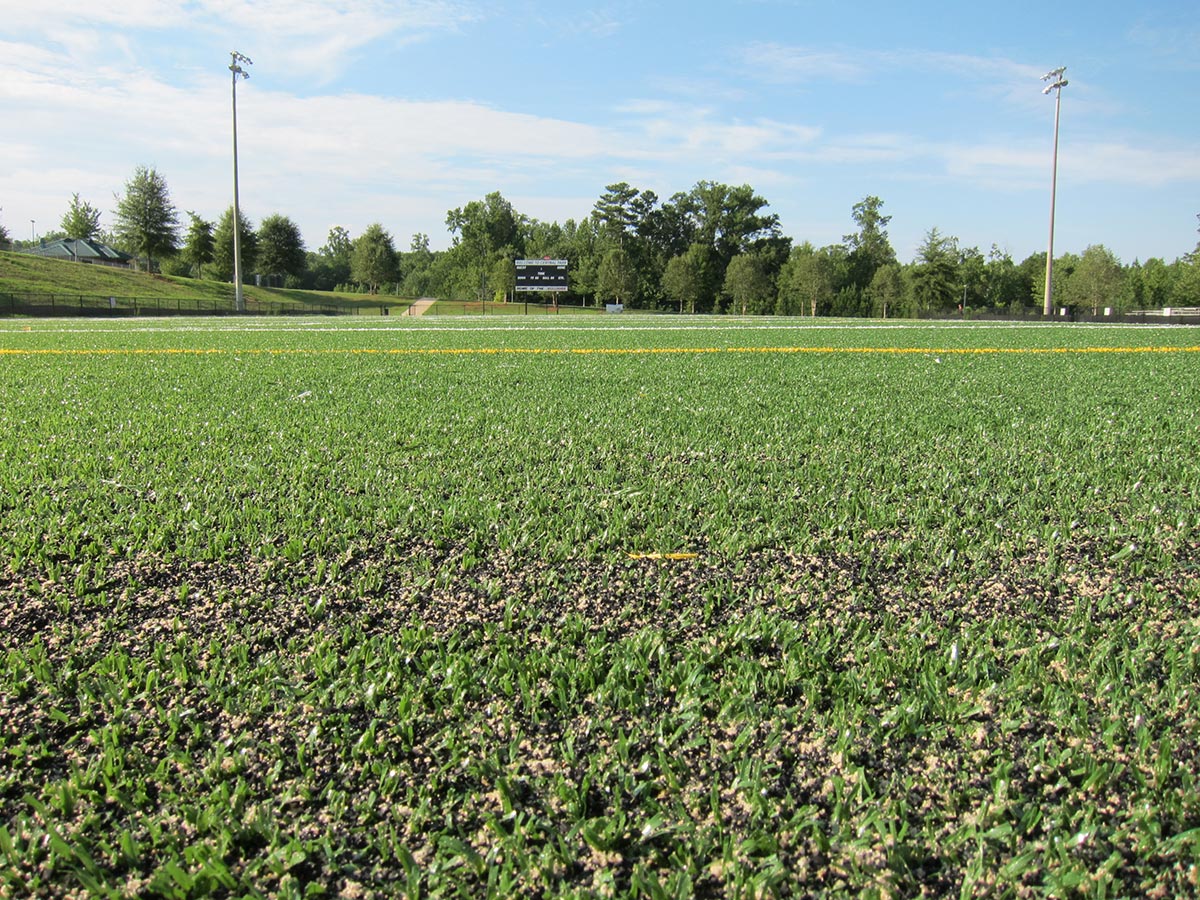
Topdressing
Topdressing
Other Names: Topdressing, Topdressing Sand, Green Sand, USGA Topdressing, Level Lawn Sand, Lawn Dressing Soil, Lawn Topdressing Soil, Grass Top Dressing, Top Dress Peat Moss, Organic Compost Topdressing
Applications
Golf Course Greens, Fairways, and Tees; Sports field (Soccer, Football, Baseball/Softball, Lacrosse); Lawn Leveling; Artificial Turf Infill; Lawn Topdressing
Key Benefits
Levels low areas in turf to prevent scalping; Promotes air and water penetration to grass and turf roots; Promotes rapid turf growth and repair; Retains moisture and nutrients, Long lasting silica sand, Ideal infiltration rate
Specs
Angular to Sub-angular shape, Meets USGA Particle Size Recommendations (if required), Available in Green Dyed Sand
Topdressing
Topdressing is one of our most popular turf care products. Topdressing comes in a variety of blends of sand, soil, compost, and peat moss. However, our clients in Metro Atlanta and Georgia prefer USGA Topdressing Sand.
For our turf care professionals such as Golf Course Superintendents, Athletic Field Managers, Landscapers, Agronomists, and other clients please note that RSI supplies a variety of topdressing products including:
- USGA Topdressing Sand (PGA Sand)
- Green Dyed Topdressing Sand
- Greensmix Sand and Peat (90/10, 80/20, 70/30)
- Ultradwarf Topdressing Sand
- River Sand
- Divot Sand
- Sand and Compost Blends
- Sand and Soil Topdressing
- Soil Topdressing
Let’s start with the purpose and benefits of topdressing your lawn, golf course, sport fields or any other turf grass field or grass lawn.
Topdressing is the process of spreading a thin layer of material, usually sand, soil, compost or a combination of these bulk landscaping materials, over the surface of your grass, usually turfgrass. Typically, the grass or turf is already established and in its growing season.
So, what is the purpose of topdressing?
There are a few reasons to topdress your lawn. The practice originated with golf courses. Turfgrass such as bentgrass, bermuda, or zoysia grows quickly because of ideal conditions. As the turf grows a layer of thatch develops, and this layer reduces the ability of air and water to penetrate to the rootzone. Core aerating prior to topdressing removes plugs from the turf and topdressing with sand allows for the holes to be filled. The fresh holes provide much needed aerification and infiltration into the rootzone of the turf. Therefore, topdressing helps develop a healthy rootzone and eliminates the excessive thatch layer that builds up and leads to grass diseases. Deeper roots mean a greener, healthier plant that is more drought tolerant and increases its ability to withstand/recover from traffic or heavy use. This is the one benefit of topdressing especially for golf courses and sports fields that have a sand-based rootzone with high intensity irrigation and fertilization plans for ideal turf conditions. Furthermore, topdressing alleviates compaction in the high use or traffic areas such as greens, the goalie spot in front of a goal, or the center of a football field.
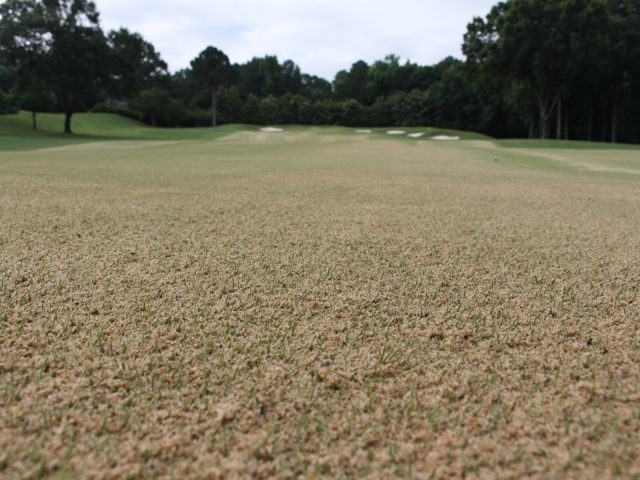
The second and most common benefit many homeowners topdress their lawn is to level the lawn or grass. A level lawn creates a smooth surface for mowing that prevents scalping. Scalping is when the mower cuts lower than all the green leaves leaving only the brown stems, stolons, or dirt beneath. Scalping actually removes the leaves from the grass and not only looks bad but is detrimental to the health of your lawn. Also, when sod is installed there are usually seams in the squares of sod that create uneven bumps that remain once it grows together. Topdressing helps level your lawn and and fill in any uneven surfaces while still allowing the grass to grow right back through the material. Levelling your yard also allows for proper surface drainage of water to prevent pooling.
The third and most relative to Georgia deals with our famous Georgia red clay. It is a common practice, almost always, for a home builder or contractor to remove any topsoil from a house site, leaving only compacted red clay to build upon. Our clay is great for building a house on but not so ideal for growing a lawn. So many lawns have compacted clay with shallow root systems that leave your grass struggling in the summer heat to survive. With the sod already established it is expensive to start all over with ideal soil conditions. Topdressing is the preferred method to amend the soil beneath your lawn without having to start all over again. One myth related to our clay is that mixing sand and clay will make bricks or concrete. This simply isn’t true. Adding sand to the soil changes the soil texture, and creates more pore space for air and water to move into the soil. The beneficial soil structure with high clay soils was probably lost by grading or compaction during the construction of the house. Keep in mind, that we supply sand, soil, and compost products to clients so if you have a preference we can get you the landscaping material that you need. But if you want to do a little more research, please look at the decades of research performed by the USGA, even specifically for topdressing.
Topdressing is a critical practice for turfgrasses that are used for golf, baseball, softball, football, soccer, or an appealing lawn. There are many methods used to apply topdressing to the grass. A topdresser, such as a Turfco Mete-r-matic, Ecolawn, Earth and Turf, Tycrop, or Toro is a great option for spreading topdressing. There are different sizes to accommodate large sports fields or golf course fairways down to smaller versions for golf course greens and home lawns. You can use a tractor, and one of the most popular methods is to top dress by hand with the help of a shovel.
Topdressing warm-season turf grasses such as bermuda, centipede, and zoysia grass is done in the growing season. In areas of Georgia such as Gainesville, Athens, Alpharetta, Roswell, Cumming, Lawrenceville, Flowery Branch, Braselton, and Dawsonville the best time of the year to topdress is May-August when the grass is green but leaving it time to reestablish before is becomes dormant again in October. There are a couple of methods to topdress your lawn and you can read our recommendation in a step-by-step article that explains how to topdress your lawn. However, the basic steps involve scalping your turf (cutting it on the lowest mower setting) once it greens up in color; core aerate the lawn, apply the topdressing sand to the surface, drag the topdressing with a rake, piece of wood/fence, or preferably a drag until it smooths the surface. Subsequent irrigation and fertilization will promote rapid regrowth of the turf.
How much topdressing do you need?
Typically, topdressing is done at an average depth of ¼” or 1 ton per 1,000 square feet. The maximum recommended is an average of ½” or 2 tons per 1,000 square feet. Some low areas may still need additional filling but try not to get the topdressing too deep as the grass takes a long time come back through. It may be better to topdress a second time in a few areas if necessary. The typical lawn in a subdivision requires 5-10 tons of topdressing. Another way to look at it is that an acre is just over 40,000 square feet, so an acre lot or ½ acre lot may have about half or less of the lot in lawn (5,000 to 20,000 square feet which requires 5 to 20 tons of sand).
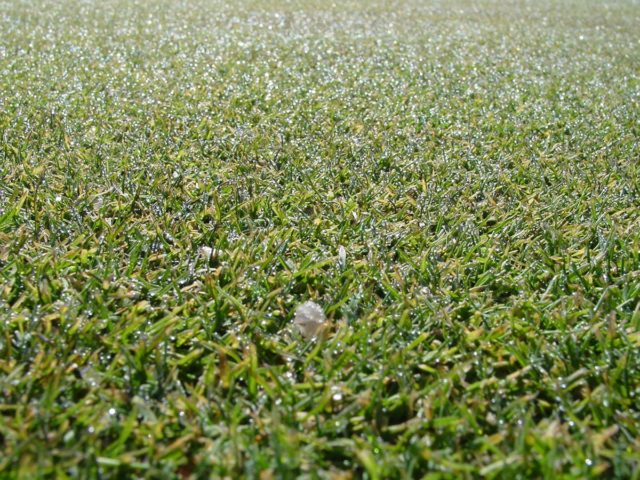
How much does topdressing your lawn cost?
There are a few options in our market here in Atlanta, Georgia and beyond.
- Hire a professional – there are several companies that offer topdressing services and many of them use our topdressing so you know that you are getting the right material. The cost has a large range but typically ranges from a few hundred dollars at a minimum to a few thousand dollars depending on the size of your lawn, the characteristics (trees, fences, topography, etc.), and access to your lawn. Topdressing is typically a lot of work, so if you aren’t the do-it-yourselfer then this may be your best option.
- Do it yourself – We can deliver the topdressing material and dump it in your driveway. We can give you instructions, and you can even rent the equipment. It is work but if you are interested then topdressing your lawn is a task that you can accomplish, save money, and really improve your lawn. The topdressing material in bulk is usually a few hundred dollars. Renting the equipment is a few hundred dollars, but you typically have the shovel, rakes, and something that will work for a drag in the garage. The core aerator is one piece that I would recommend renting ($50-100) or purchasing ($100-200).
- Do it with a neighbor(s) – We have a lot of clients that talk their next door neighbor into working together to split a load of topdressing and doing both lawns. It works well, as long as you don’t have a lazy neighbor.
- Hire some help – Do the research yourself but hire some energetic help at a daily rate to help you spread the topdressing. This adds a $100-200 to the day but helps your back and wallet.
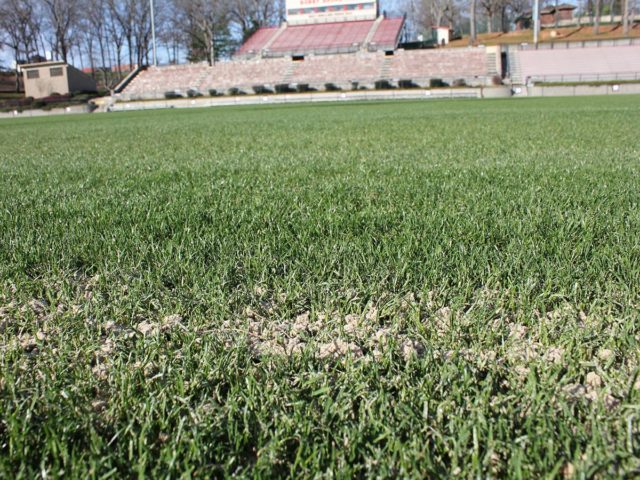
What material should I topdress my lawn grass with?
Should I topdress with topdressing sand, soil mix, compost, or a combination of these bulk materials. There are benefits to topdressing with sand, soil and compost.
The most common choice to topdress your lawn is with sand alone. River sand is an option that works exceptionally for most lawns and athletic fields. Our River Sand contains about 10% of particles that are slightly coarser than the alternative USGA Topdressing Sand. The coarser particles of sand are great for creating more pore space and alleviating compaction. They are not beneficial if they do not get down through the turf into the rootzone and stay on top for a reel mower to pick up or a player to slide or fall on. USGA Topdressing Sand follows strict guidelines or recommendations by the USGA. The guidelines focus on the sand being mostly medium sized particles. Medium sized particles work great to get down into the grass or turf rootzone (through the blades) to provide pore space, alleviate compaction, and level uneven surfaces. Sand has long been the best option to improve an already established, healthy turf. The USGA has done extensive research on the ideal sand for topdressing. Sand makes a great material for filling in core aerated plugs and leveling evenly. Sand is also inert, meaning that it will not break down over time but it is a permanent amendment to the rootzone and in the leveling process. Topdressing sand does not however add any significant macro-nutrients or organic matter. A topdressing soil mix can add both to your lawn.
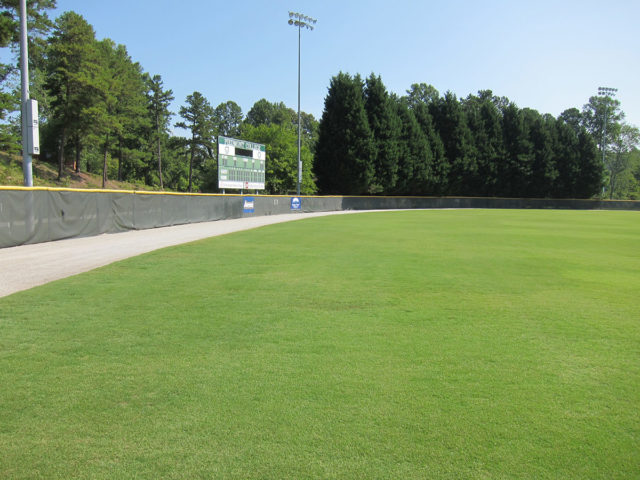
Topsoil can be used for either by itself or blended with sand for a topdressing soil mix for your lawn. So what is the best soil top dressing for your lawn? Ideally, one that is loamy or sandy loam in texture, optimal pH, and contains some organic matter. We have soil that is ideal for planting grass or laying sod. However, it is difficult to topdress your lawn with. The soil is often too fine to spread easily and evenly, and tends not to fall into the core plugs. Topdressing with soil often leads to the same unevenness and clogs up a drag if the moisture level gets too wet. The other disadvantage with using soil to topdress is oversize particles (rocks, sticks, etc.). Very few topsoil or soil products can be screened less than ½” – ¾” leaving the larger debris in the soil. It will end up on top of your lawn and rocks are very difficult or impossible to get out of the lawn. Mowers can end up throwing these rocks if left on top of the turf.
The next option is compost or peat moss. Peat moss is an option and is used for golf greens to be established but not for topdressing. In Georgia, Peat is expensive and it offers great benefits from an organic matter prospective but little in terms of microorganism activity and fertilization as compared to compost. Compost is an excellent choice for a soil amendment. It has become a popular choice for topdressing. Know that not all “compost” is an actual compost. There are many options of black dirt or manure or sludge that has not been properly composted and is not beneficial and can be harmful. However, you need to know the comparison between sand and compost or a combination for topdressing. Compost adds to soil organic matter, adds and improves soil microbes and health, contains some nutrient value, and helps retain plant available nutrients and water for the lawn. Compost is generally easy to apply like sand, but doesn’t spread as evenly. Compost like soil is often screened to ½” to ¾” and contains larger pieces of wood, peanut hulls, or other media used to compost. These larger pieces will remain on the surface and generally are wasted (easily blown off with a mower or blower) but not detrimental or dangerous. Compost does add organic matter to the soil but a healthy turf should already be adding its own organic matter and have soil with healthy microbial activity. It does not immediately add pore space to the soil, as soil structure (little and big pores formed in the clay) takes time. Compost is also an organic matter than will be broken down over time, which is not ideal as compared to sand’s longer lasting effects. Compost does add nutrients to the soil but keep in mind that it is rarely listed or mentioned because the percentage is less than 1% of its weight (so a really big pile of compost contains less nutrients than a small bag of fertilizer). One way to combine the benefits of sand and compost is to blend them. Typically a 70% sand and 30% compost blend is the best option but 60 to 90% sand and 10-40% compost is an acceptable range. The other option is just to apply both at the same time individually.
Ultimately, the best topdressing for lawns is with sand. Sand is the best value and benefit for the typical lawn, golf course, and athletic field in Georgia. However, that isn’t always the case in for each situation and why we offer so many options to meet your project’s needs and preferences.
We Deliver!
Your final question may be the following. Where is topdressing near me? RSI supplies many bulk options of topdressing and literally has tons of topdressing for sale near you. Let us know when you need your topdressing and we can load it up or have it delivered from our various locations near Atlanta, Alpharetta, Athens, Cumming, Jefferson, Winder, Commerce and Gainesville
Frequently Asked Questions
Do you have questions about Topdressing? We have answers!
Topdressing helps reduce excessive thatch and organic matter that will lead to a spongy soft playing surface. The right type of sand helps maintain a smooth, firm green for optimal play. Sand topdressing also encourages air and water to enter the rootzone for a healthy turf.
If your turf has brown areas from unlevel spots after mowing (scalping), then topdressing can help level the soil surface and promote healthy turf. Also, if you take a plug and see excessive thatch build up or shallow roots, topdressing along with core aeration will help promote healthy turf. The time of year to apply topdressing sand is key. Warm season turfgrass such as bermuda, zoysia, and centipede should be topdressed once it has begun to turn green or is green. In Georgia, that is typically when soil temperatures reach optimal level in April or May at the earliest. Topdressing season can extend through June and July into August. The limiting factor is allowing enough time for it to grow through the topdressing application before it goes dormant. Topdressing cool season grasses such as fescue and rye is best done with overseeding in the Fall.
River Sand, Inc. supplies golf courses around Atlanta and the rest of Georgia with multiple shades of green dyed topdressing sand. Light, frequent topdressing applications can be easily applied without golfers noticing with the right green sand.
Topdressing is not a new practice for golf courses and athletic field turf. Lawn turf is often a similar turf, usually bermuda or zoysia. Sand has been the standard topdressing material for decades and it backed by decades of research and application by the leading turfgrass professionals. Sand spreads evenly over the turf to provide a level surface for an even cut by the mower, preventing scalping. Sand is also an inert material, meaning that it will stay within the soil creating pore space for infiltration of air and water. Sand along with core aerating reduces compaction of high clay content soils. Sand also helps alleviate excessive thatch build up. A heathy turf already has beneficial microbes within the soil, but excessive thatch or shallow roots can lead to the loss of turfgrass health. RSI has a variety of topdressing sands for different applications and turf types. Our topdressing may be dyed green or blended with compost if preferred.
Topdressing a lawn can improve your turf health and appeal. Topdressing Sand is still the best material to level and topdress your lawn. Compost has become a popular alternative because it is easy to apply and can cover a lot of area per ton. However, most professional golf courses and sports fields still topdress with sand alone. The method is backed with decades of turfgrass research. Sand spreads and levels a surface easily. Sand also increases porosity immediately within the rootzone to promote deep roots with good water and air infiltration. Compost adds organic matter to the soil along with beneficial microbes. However, a healthy turf may not need more organic matter as it produces its own (thatch) and it should already have an established microbial ecosystem. The more practical side of compost application is that you end up with the larger pieces of debris (wood, peanut hulls, leaves, etc.) left on top and a portion of it blown off with the next mowing. The issue with applying a good topsoil is that it is more difficult to spread and it may contain small rocks/pebbles that are not good for any mowers, especially reel mowers. RSI still offers all types of sand topdressing, sand/compost topdressing blends, loamy soil topdressing, green topdressing, and sand/peat blends for topdressing. If you have a preference let us know.
Related Articles
See what we’ve been saying about
Topdressing
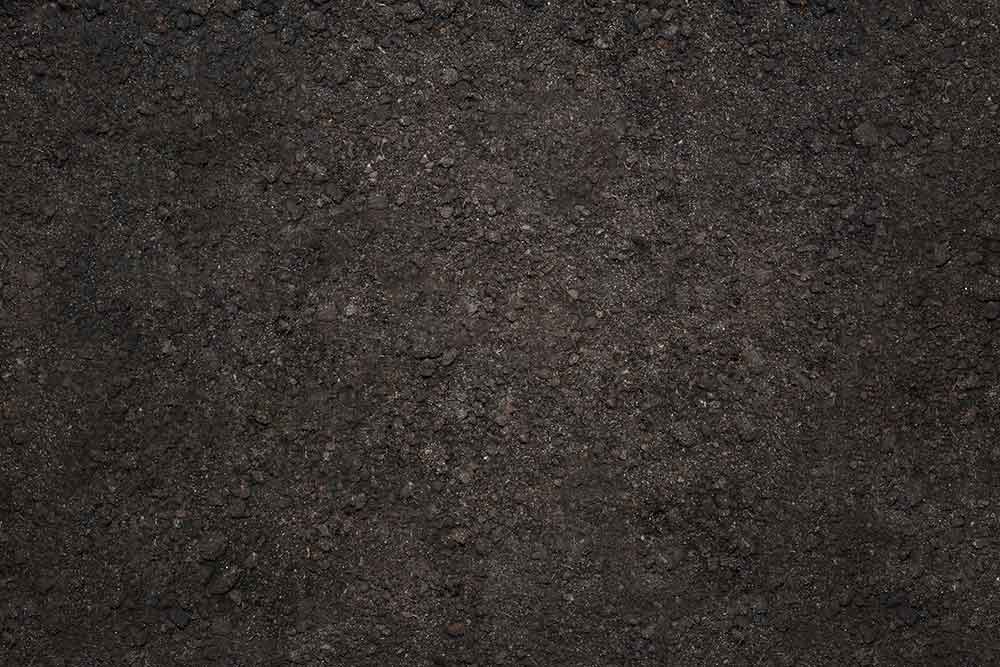
“As a homeowner, I use River Sand Inc. for all of my lawn topdressing needs. I do my own yard work and have found that River Sand Inc. is extremely affordable, extremely professional and their sand is super clean and perfect for what I need. They made me feel like a big time client even though my orders were relatively small.”
— C. Cooper
Related Products
Calculate Your Project
Determine how much product you need for your project and submit it to us for a free estimate, including delivery costs.
Dredging projects and In-Field Mix are calculated separately.


